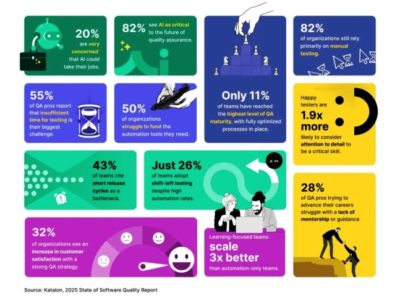By Huang Yu, Director of the Education and Healthcare Department, Global Government Business Unit, Enterprise Business Group.
For hundreds of years, students worldwide have been taught almost exclusively in classrooms, typically with a passive, teacher-centric approach. In the past decade, though, this has begun to change: The education field has started to digitally transform. And that process has been accelerated in the last year or so, with the COVID-19 pandemic suddenly and drastically disrupting education around the world. In these unprecedented times, educational organizations have been forced to seek solutions to ensure learning continuity for all students — a challenge that has become one of the most discussed topics for educators worldwide. Against this backdrop, an alternative approach has emerged: hybrid learning.
Hybrid learning is an educational model that entails some students attending class in-person while others join virtually — from home, a university dormitory, or almost any location where they can access the Internet — in what’s become known as an Online-Merge-Offline (OMO) mode. In relation to blended learning (online learning that complements in-person classes) and e-Learning (educational courses that are solely delivered electronically), which have been widely put into practice by educators during past decade, hybrid learning is an evolutionary teaching method. It emphasizes applying digitalized teaching methods to class activities in order to deliver a digital, interactive, and engaging class atmosphere, while ensuring the students attending remotely can enjoy the same learning experience.
RELATED Kaspersky Notes Unprecedented Rise In Cyberattacks Targeting Educational Sector
As a leading ICT solution provider, Huawei has been dedicated to developing new technologies in this field for a decade. And in recent years, the company has launched the Huawei Hybrid Learning Solution. The solution has served hundreds of schools and universities in many countries and regions, with the number of users increasing dramatically during the pandemic period.
The Learning Management System (LMS) integrated into Huawei’s Hybrid Learning Solution was developed in cooperation with ULearning, a Software as a Service (SaaS) partner certified by HUAWEI CLOUD. ULearning’s LMS provides comprehensive and user-friendly features throughout the entire learning process — before, in, and after class.
In the before-class lesson planning stage, the LMS allows the teacher to upload and archive e-content in multiple formats (such as Word, PowerPoint, PDF, JPEG, and video files), as well as providing flexibility to wrap up those files into the courseware.
In class, teachers can use HUAWEI IdeaHub — a productivity tool that bundles videoconferencing and wireless sharing, featuring a 4K soft light screen that’s available in 65-inch or 86 -inch models, with interactive touch functions designed for use in education — to log into the LMS and play, with a new pedagogical approach, the prepared digital courseware online for students attending in-person. Meanwhile, students attending remotely can use their laptop or tablet to log into the LMS and watch a split-screen view of both what’s being shared on the IdeaHub screen and a live video feed that’s collected using cameras and microphones inside the classroom, processed, then streamed to the LMS.
Importantly, students can also communicate, or even collaboratively interact, with everyone in the physical classroom, empowered by the conferencing system — with Real-Time-Communication (RTC), technology and protocols applied, which has been integrated into the LMS and is supported by HUAWEI CLOUD.
As well as those fundamental features, the LMS also provides some helpful tools — like polls, in-class quizzes, attendance checking, and group discussions — making the teaching experience more efficient and interactive, and encouraging engaging knowledge-sharing.
When a lesson is over, learning doesn’t have to end, with after-class study as important as scheduled classes. Using advanced technologies, students are now able to continue their studies outside of class times — doing exercises, fulfilling assignments, and even taking online tests set by the teacher. The LMS will automatically record and, empowered by AI algorithms, analyze all statistics generated from the whole learning process, outputting analytics reports about the performance of the class, as well as each individual student’s knowledge, so that the teacher can evaluate the outcomes and improve teaching methodology accordingly. Because the system knows each student’s knowledge weak points, digital nudge technology is applied to disseminate different content to different students, putting adaptive learning into practice.
As well as Huawei’s strengths as a provider of traditional ICT solutions and its role as a global cloud service provider, Huawei is committed to bringing reliable, effective, secure, cost-effective and Artificial Intelligence (AI) services through technological innovation, together with thousands of ecosystem partners. In this hybrid learning solution, Huawei provides state-of-the-art hardware products, such as IdeaHub; network devices, like its AirEngine Wi-Fi 6 Access Points (APs); as well as critical cloud services.
To succeed with a hybrid learning class, from a technical perspective, the key elements of a solution should include:
A feature-rich LMS that must integrate the videoconferencing system.
A set of digital devices in the classroom that enable the teacher to use digital courseware and interactive teaching techniques.
A highly reliable cloud service that supports many concurrent users, particularly at peak times.
A high-speed and stable network connection so that all learners — both online and offline — will be able to access a wealth of knowledge.
Factors such as these will be decisive for education systems around the world as they explore the best approaches to guaranteeing learning continuity. Having proved its worth during the pandemic, with some schools and universities applying partial opening policies, and its role transforming from supplementary to essential — hybrid learning seems set to reshape the landscape of education worldwide.
For more insights and solution about education digitalization, we sincerely suggest you can visit Huawei Smart Education website to explore how to lead your organization to a smarter and more efficient era: https://bit.ly/3mXNd2Q































